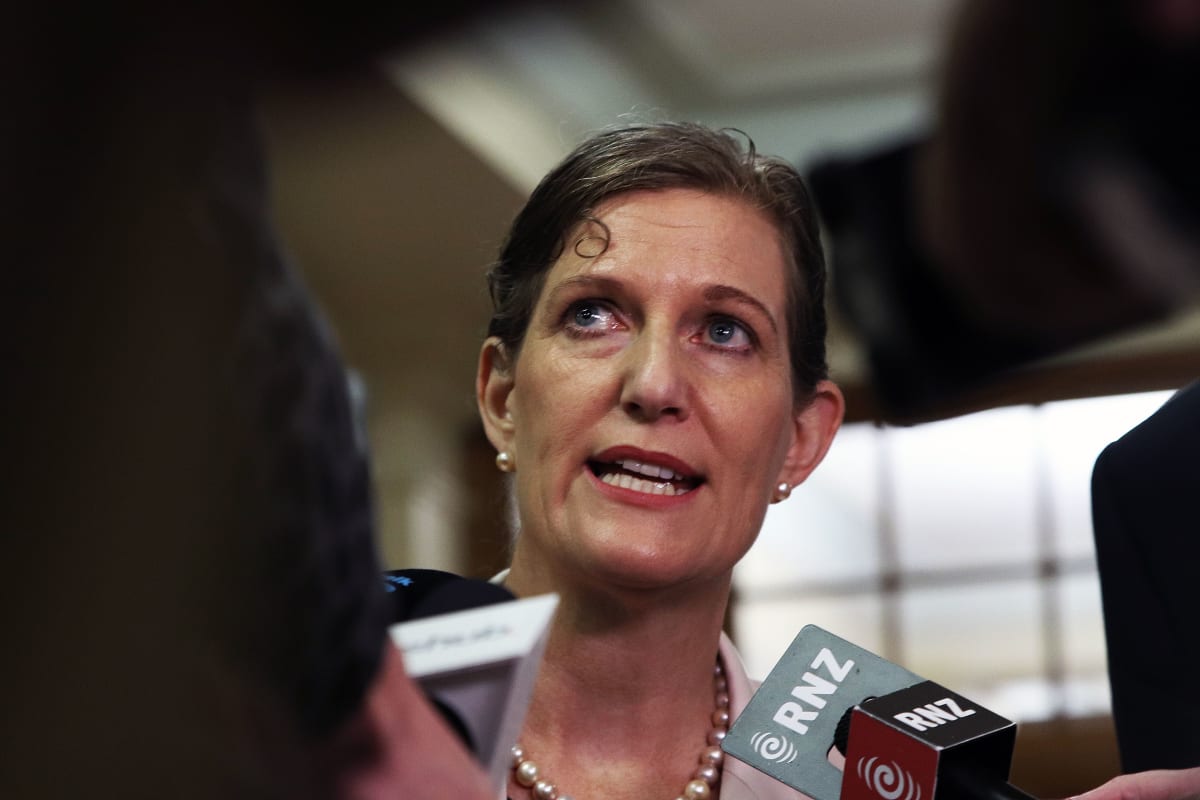SIS: Covid-19 could lead to greater terror threat

Extremism
Analysis: The impact of Covid-19 in accelerating radicalisation and fuelling conspiracy theories could be felt for years to come, spy agencies say
Intelligence agencies say there is a “realistic possibility” the Covid-19 pandemic will accelerate online radicalisation over the next year and “have a detrimental effect on the broader threat environment in the medium- to long-term”.
The greater prominence of conspiracy theories and extremist sentiment stirred up by the pandemic, as well as more time to spend online during lockdowns, has created greater opportunities for New Zealanders to be exposed to “conspiracy theories, extremist content and disinformation” on the internet, the Security Intelligence Service (SIS) found in its annual report. This, in turn, “could accelerate radicalisation and exacerbate or fuel Covid-19 pandemic-related grievances or conspiracy theories over the next 12 months”.
In addition to disclosing the fact that agencies have been investigating a New Zealander who they believe is working for another country’s intelligence apparatus, the report ventured into more detail about the realities of online extremism in New Zealand than previous documents had. It also came after intelligence chiefs fronted a select committee in Parliament chaired by Jacinda Ardern and faced questions from reporters about the extent of far-right extremism in the country and the SIS’ efforts to combat the threat.
Covid-19 leads to greater terror threat
“Covid-19 has likely impacted the domestic threat environment. The Covid-19 pandemic has provided a platform for individuals with a range of ideologies to aggressively push agendas and promote justifications for extremist and nationalistic propaganda, fake news and conspiracy theories,” the SIS report stated.
“Increased consumption of this material could lead to a broader acceptance of online extremist content and targeting of vulnerable groups over the next 12 months, and beyond.”
Al Gillespie, a law professor at Waikato University, said he wasn’t surprised that security agencies had found the Covid-19 pandemic was responsible for an uptick in extremist activity or sentiment.
“There’s certainly some people who became more radical with some extreme views because of the lockdown and because of the political restrictions that were imposed upon them than they might have otherwise been,” he said.
“But whether that actually means that those people become a risk of violence is another debate altogether. It’s hard to know how much it was an ongoing trend anyway and whether the lockdowns just exacerbated that.”
M Dentith, who studies conspiracy theories at Waikato University, agreed with Gillespie that the pandemic likely had an impact, but quantifying that was difficult.
“It is true [that] one of the features we’ve seen with lockdowns both here and abroad is that when you’re stuck in your home for long periods of time, you do end up consuming a lot more social media or spending time listening to things like talkback. More so than you probably would do if you’re able to live your life in a normal fashion,” they said.
“It does make sense that we’re taking in a lot more data. Of course one of the recurrent issues we’ve had is that we’re not really good at working out whether our sources of data are in any sense particularly good. When you’re stuck at home and you’re reading a lot, you’re not necessarily reading with any large amount of discernment.”
Social media played a particularly large role in this radicalisation, Dentith said.
“If you’ve just got YouTube on in the background, we know what happens eventually.”
Far-right extremists under the microscope
In her appearance before the Security and Intelligence select committee, SIS director-general Rebecca Kitteridge said about half of the agency’s counter-terrorism efforts were aimed at “white identity motivated extremism” and the other half was aimed at Islamic extremism.
“That’s significant because not only is that the first time they’ve ever given a percentage of the way that the resources are divided, it’s also unique because the terror threat in New Zealand – if it is at least 50 percent on the far-right – is unlike the breakdown in other countries,” Gillespie said.
“In other countries like Australia and Britain, it’s a minority threat. Whereas what they’re saying now – especially post March 15 in Christchurch – it may be the majority threat. So that’s unique.”
Between July 2019 and June 2020, 60 percent of the leads the SIS received were related to “politically-motivated violent extremism” – which includes far-right extremism – and the remainder related to Islamic threats. The majority of the politically-motivated threats that necessitated investigation were white supremacist in nature.
“Online activity, including consumption of extremist material and violent rhetoric was a consistent feature of many leads and investigations,” the SIS report found.
“The increased proportion of leads is largely a result of increased public awareness of the threat from extremist violence and consumption of extremist material. However, it is a possibility that the Christchurch Mosque attacks may have inspired individuals to actively seek extremist material or contact with extremist groups.”
At any one stage in the 12-month period, between 30 and 50 people were being actively investigated, the SIS report stated.
“This number is higher than recent years, although more fluid and broad, largely as a consequence of investigations related to Politically-Motivated Violent Extremism, including white identity extremism.”
Four warrants to spy on foreign citizens were granted to the SIS in the 2019/2020 year and 22 to spy on New Zealanders.
Government agencies warned about infiltration risk
The report detailed two case studies of counter-terrorism investigations undertaken in the 2019/2020 year. In one, an individual discussed committing a terror attack in New Zealand on extremist forums and read about and shared attack methods online. The SIS “provided advice to other government agencies and worked cooperatively to help mitigate the potential threat”. It is unclear whether this individual was a faith-motivated extremist or a politically-motivated one.
The second case study involved a far-right extremist who made violent remarks directed against other ethnicities, online and in person.
“Despite this rhetoric, the individual has not specifically planned or prepared to conduct an act of ideologically motivated violence. Following an almost year-long investigation, NZSIS assesses that their rhetoric is unlikely to manifest into any real-world violent behaviour and their violent remarks are intended to offend and inflame others,” the report concluded.
Speaking to reporters after the select committee appearance, Kitteridge also said the SIS was aware of reports and trends from overseas that far-right extremists might seek to infiltrate the military and law enforcement agencies. In early March, FBI director Christopher Wray told the United States Congress he considered domestic extremists “a kind of insider threat”.
“As we’re continuing to investigate the January 6th attack, there have been some instances of current or particular former military or law enforcement who participated,” he said.
In New Zealand, a soldier who identified online as a ‘Nazi’ was arrested in late 2019 and has been charged with espionage; a member of white supremacist group Action Zealandia left the Army Reserves in July 2020 after Newsroom exposed him; and an extremist who wrote about launching terror cells in New Zealand claimed to be an ex-soldier.
“It’s really important to be aware of that point and we are aware of those trends that we’ve seen around the world,” Kitteridge said.
“NZSIS has very active engagement with a whole range of different government agencies, including the uniformed services. Those trends have been drawn to the attention right across government and we have a protective security group that provides help and assistance to make sure that those kinds of ideologies do not gain any kind of foothold in the New Zealand government.”
The SIS report also found that the nature of threats from foreign interference had changed in light of the pandemic.
“During New Zealand’s Covid-19 lockdown, other countries publicly reported that foreign intelligence agencies would almost certainly use their cyber capabilities to pursue intelligence related to Covid-19 medical research and intellectual property, especially related to vaccine development, treatments, Covid-19 testing, and medical devices such as ventilators or personal protective equipment that would offer public health, economic, and national security benefits,” the report stated.
The annual report from the Government Communications Security Bureau (GCSB) made a similar finding.
“Of particular concern is state sponsored malicious cyber activity aimed at organisations involved in Covid-19 vaccine development,” GCSB director-general Andrew Hampton wrote.
However, the GCSB concluded that New Zealand hadn’t been subject to a significant increase in Covid-19-related hacking. On the other hand, the pandemic did accelerate existing trends in remote and digital working that created new and greater cyber security risks, the agency reported.


